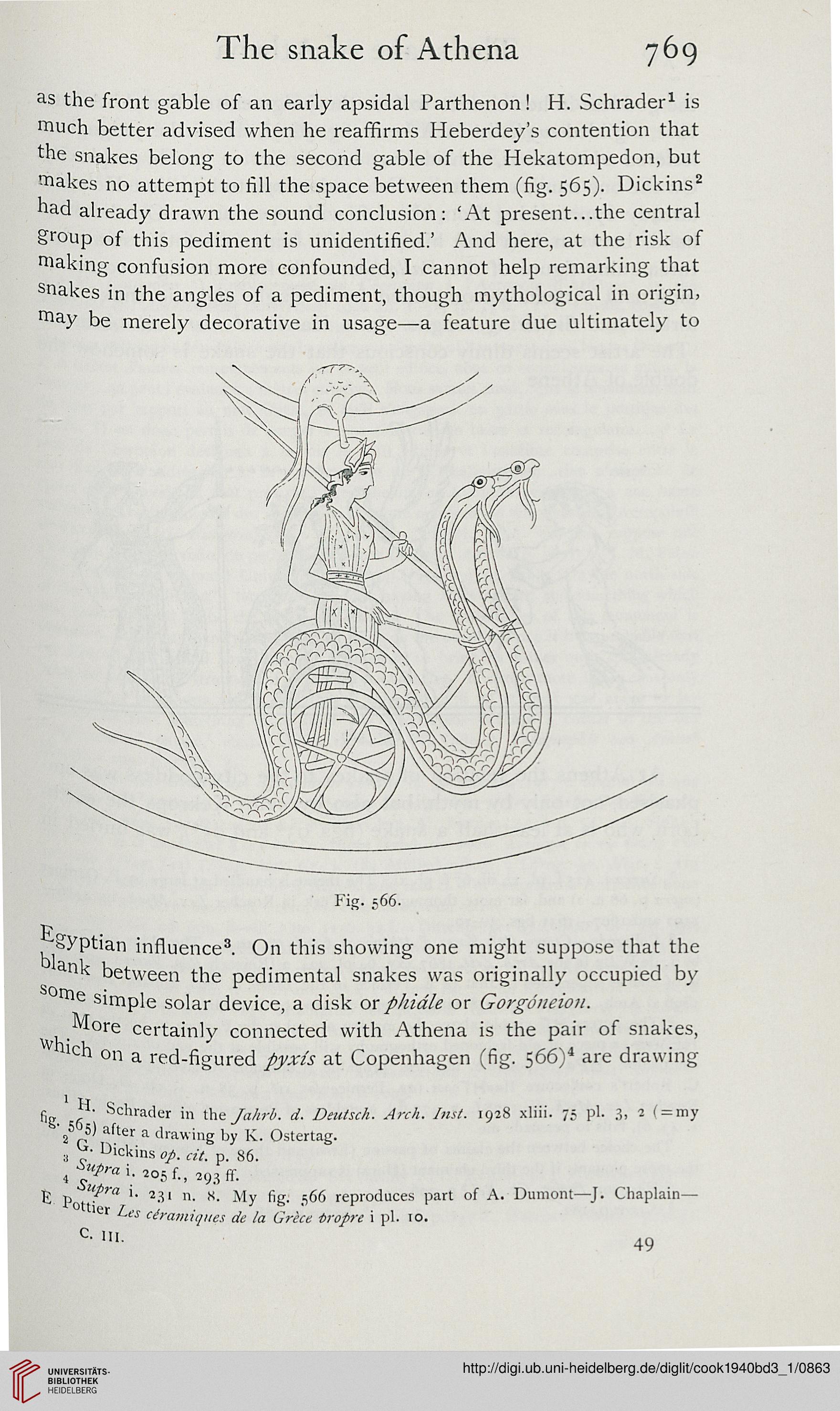The snake of Athena 769
as the front gable of an early apsidal Parthenon! H. Schrader1 is
much better advised when he reaffirms Heberdey's contention that
the snakes belong to the second gable of the Hekatompedon, but
makes no attempt to fill the space between them (fig. 565). Dickins2
had already drawn the sound conclusion: 'At present...the central
group of this pediment is unidentified.' And here, at the risk of
making confusion more confounded, I cannot help remarking that
snakes in the angles of a pediment, though mythological in origin,
may be merely decorative in usage—a feature due ultimately to
Fig. 566.
Egyptian influence3. On this showing one might suppose that the
blank between the pedimental snakes was originally occupied by
Sorne simple solar device, a disk or piddle or Gorgoneion.
More certainly connected with Athena is the pair of snakes,
which on a red-figured pyxis at Copenhagen (fig. 566)4 are drawing
fi ' H. Schrader in the Jahrb. d. Deulsch. Arch. Inst. 1928 xffii. JS pi. 3. » < = my
25<5?' after a drawing by K. Ostertag.
, Dickins op. cit. p. 86.
i s«pra i. 205 f., 293 ff.
£ Supra i. 23, n_ «. My fig_ _s66 reproduces part of A. Dumont—J. Chaplain—
Po«ier Us eira
'antiques de la Greet tropre i pi. 10.
49
as the front gable of an early apsidal Parthenon! H. Schrader1 is
much better advised when he reaffirms Heberdey's contention that
the snakes belong to the second gable of the Hekatompedon, but
makes no attempt to fill the space between them (fig. 565). Dickins2
had already drawn the sound conclusion: 'At present...the central
group of this pediment is unidentified.' And here, at the risk of
making confusion more confounded, I cannot help remarking that
snakes in the angles of a pediment, though mythological in origin,
may be merely decorative in usage—a feature due ultimately to
Fig. 566.
Egyptian influence3. On this showing one might suppose that the
blank between the pedimental snakes was originally occupied by
Sorne simple solar device, a disk or piddle or Gorgoneion.
More certainly connected with Athena is the pair of snakes,
which on a red-figured pyxis at Copenhagen (fig. 566)4 are drawing
fi ' H. Schrader in the Jahrb. d. Deulsch. Arch. Inst. 1928 xffii. JS pi. 3. » < = my
25<5?' after a drawing by K. Ostertag.
, Dickins op. cit. p. 86.
i s«pra i. 205 f., 293 ff.
£ Supra i. 23, n_ «. My fig_ _s66 reproduces part of A. Dumont—J. Chaplain—
Po«ier Us eira
'antiques de la Greet tropre i pi. 10.
49




